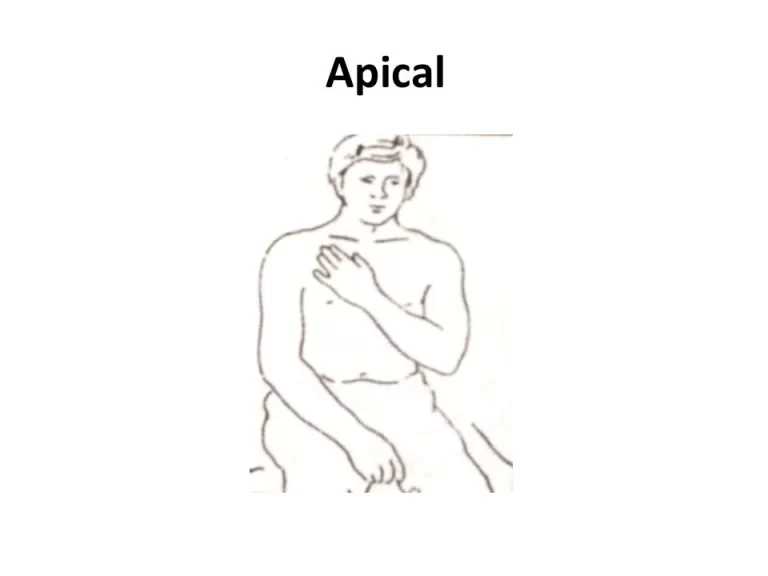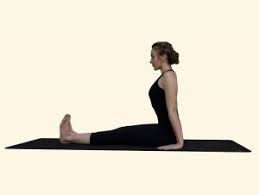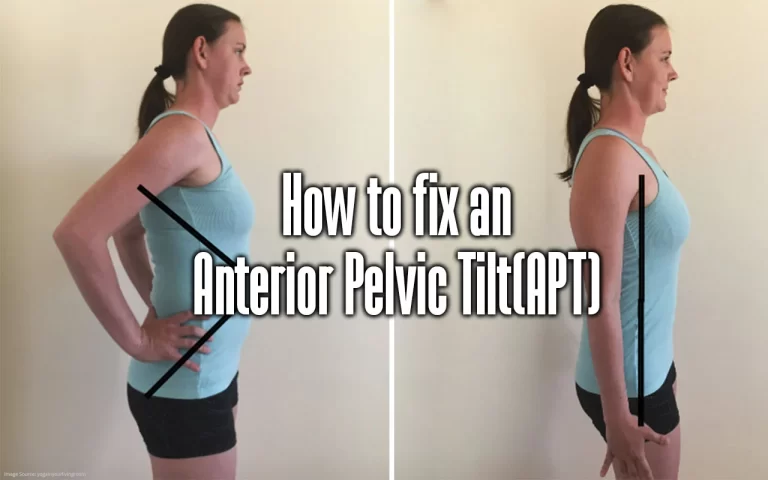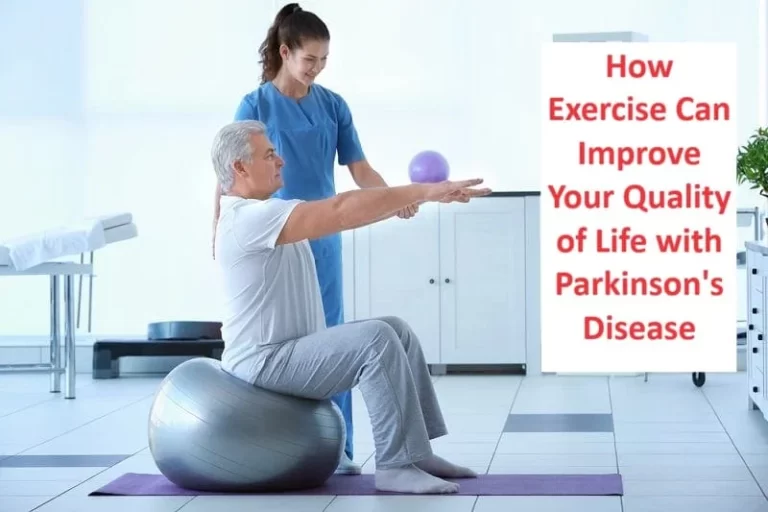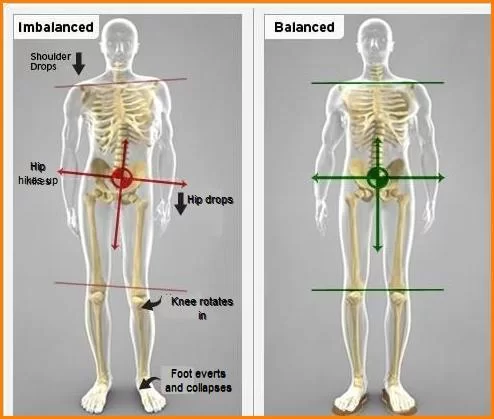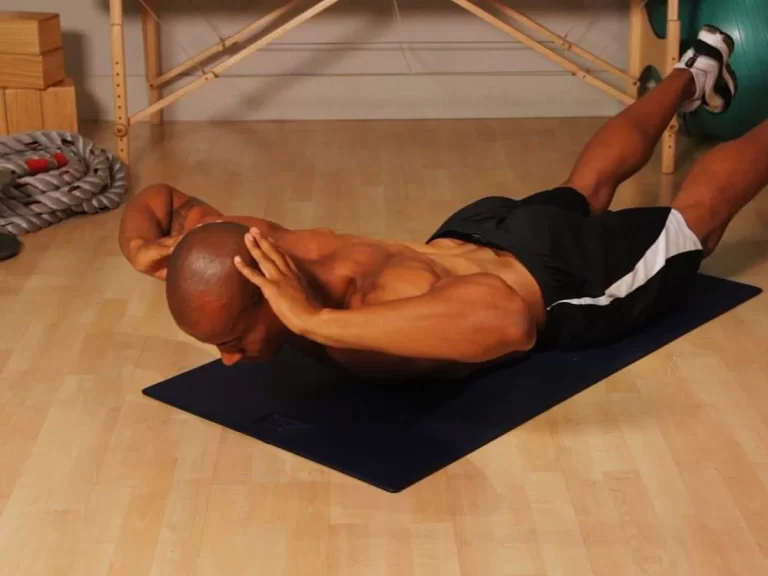Patellar tendonitis treatment : Physiotherapy Exercise
Table of Contents
Introduction :
Patellar tendonitis is an injury to the Quadriceps tendon that connect your patella to your tibia (shinbone). The Quadriceps patellar tendon works with the muscles at the front of your thigh to extend your knee so that you can walk, run, sit to stand and jump.
Patellar tendonitis, also called jumper’s knee, It is most common in sportsmen whose require frequent jumping, running activity — such as basketball, football and volleyball. However, It can happen to anyone due to age, fall on knee, knee jerk related activity can get patellar tendonitis.
Mostly you can start treatment of patellar tendinitis with physiotherapy exercise mainly stretching and strengthening of the quadriceps muscles with pain relieving medicines are used.
Causes of Patellar tendonitis :
It may occurs mainly due to overuse injury, caused by continuos stress on your patellar tendon. The stress results in initially minute tears in the tendon, which your body try attempts to repair if you can take enough rest.
But as the tears in the tendon multiply if you not take proper rest and doing continuous stress on it, they cause pain and inflammation and weakening of the tendon. When this tendon damage continuous for more than a few weeks, it’s called Pateller tendinopathy.
Following are the most common cause :
- tight quadriceps/Hamstring muscles (Thigh muscles)
- uneven leg muscle strength
- misaligned feet, ankles, and legs (limb length discrepancy)
- overweight (obesity)
- shoes without enough padding
- hard playing surfaces
- chronic diseases, Paralysis that weaken the tendon
Risk Factors in Patellar tendonitis :
A one or more combination of factors may contribute to the development of patellar tendonitis, following are the most common risk to develop if you have:
Over Physical activity: Running and jumping are most commonly associated with patellar tendonitis. Sudden increases in how hard or how often start the activity also add extra stress to the tendon, as can your running poor shoes pattern.
Tight Thigh muscles: Tight thigh muscles mainly quadriceps and hamstrings muscles, which run up the back of your thighs, can increase strain on your patellar tendon.
Muscular imbalance: If some muscles in your legs are much stronger than others, the stronger muscles could pull harder on your patellar tendon. This uneven pull could cause tendinitis.
Chronic illness: Long illnesses makes you physically weak and also to the knee, which weakens the tendon. long Bed-ridden condition. Such as Paralysis, kidney failure, autoimmune diseases such as lupus or osteoarthritis, rheumatoid arthritis, and metabolic diseases such as diabetes.
Symptoms :
Following are the most common symptoms seen in Patellar Tendinitis :
- Knee Pain and tenderness around your patellar tendon
- Swelling around knee joint
- Knee Pain with jumping, running, or walking aggravating with activity and relieving with rest
- Pain when bending or straightening your leg
- Tenderness behind the lower part of your kneecap
- Earlier, you may only feel pain in your knee as you start a physical activity or just after an intense workout, But gradually the pain increases and starts to interfere with playing your sport or Day to day activity.
- If you not treated, the pain may increase even more with daily activity such as climbing stairs or rising from a chair.
How Diagnosis of Patellar Tendonitis is made ?
Following methods mostly Doctors are used to Diagnosed the Knee pain.
X-rays :- X-rays help to exclude other Knee problems that can cause knee pain.
Ultrasound Graphy :- This test uses sound waves to create an image of your knee, revealing tears in your patellar tendon.
Knee Magnetic resonance imaging (MRI) :- MRI uses a magnetic field and radio waves to create detailed images that can reveal subtle changes in the patellar tendon.
Patellar tendonitis treatment :
Pain relieving Analgesic Medicine mainly NSAIDs for symptomatic pain and inflammation reduction, such as ibuprofen (Advil), naproxen sodium (Aleve), aceclofenac are mostly prescribed by Doctors.
Rest, Physiotherapy treatment,exercise, Ice Pack and Hot Pack are also Beneficial.
If your pain is severe, not relieve with pain relieving medicine and Physiotherapy Treatment , your doctor may give you a corticosteroid injection in the area around your patellar tendon. This is more effective in reducing severe pain.
Corticosteroid injection : An ultrasound-guided corticosteroid injection into the sheath around the patellar tendon may help relieve severe pain.
Platelet-rich plasma injection has been tried in few people with chronic patellar tendonitis, This Studies are ongoing shows promote new tissue formation and help repair damage tendon.
Oscillating needle procedure : This procedure is performed using under local anesthesia. Your physician uses ultrasound imaging to guide a small oscillating needle that cuts the damaged area while saving healthy tendon, However This is a new procedure, but results have shown effective.
Physiotherapy Treatment in Patellar tendonitis
Physiotherapy treatment initially are pain relieving Electrotherapy Modalities such as Interferential Therapy(IFT), Ultrasound Therapy (US), TENS (Transcutaneous Electrical Nervous Stimulation) are most used.
Initially Pain free low Intensity Static Quadriceps exercise (SQE) with SLR, Active Knee Range of Motion exercise and Active Quadriceps exercise in High sitting and Hamstring exercise in Prone Position.
As pain relieve increase strengthening exercise with Weight cuff and also started stretching exercise of Calf muscles, Hamstring muscles and Quadriceps muscles.
Following are few Easy to do Home exercise you can try at Home :
Static Quadriceps exercise (SQE) :
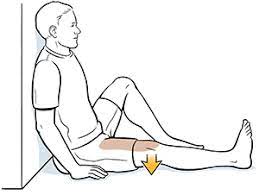
This simple exercise you can start from day one, Take a long sitting position with your affected knee are straight, place small folded towel underneath the knee and try to press the towel with using your knee muscles, Holds for 5 to 10 seconds and relax. (as seen in images)
Repeat 8 to 10 times , 2 times a Day initially and as you improve increase repetitions and sets in your comfort.
Straight Leg Raising(SLR) :

This simple easy to do home exercise also you can start from day one, This exercise will strengthen your Hip and Knee muscles.
To do this exercise, take supine lying position on Bed or Soft Mat with opposite leg slightly Bend from Hip and knee, while affected knee are straight and Back and Neck are fully supported position on Mat.
Gradually Lift your affected Leg as you can Hold for 5 to 10 seconds, then lower the leg. Repeat This exercise 8 to 10 times , 2 times a Day. As you improve you can increase repetitions.

